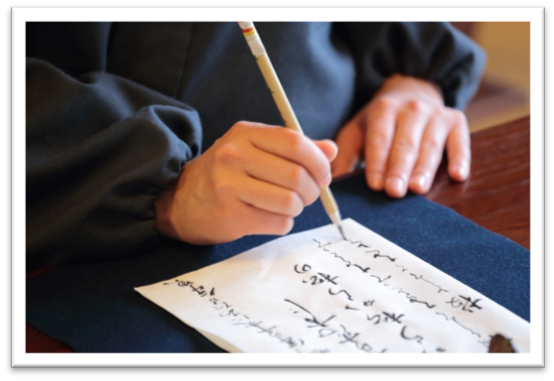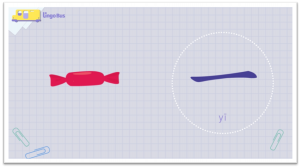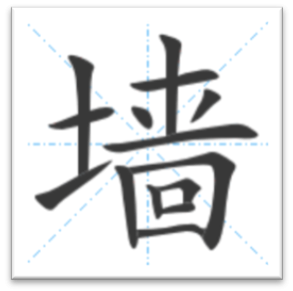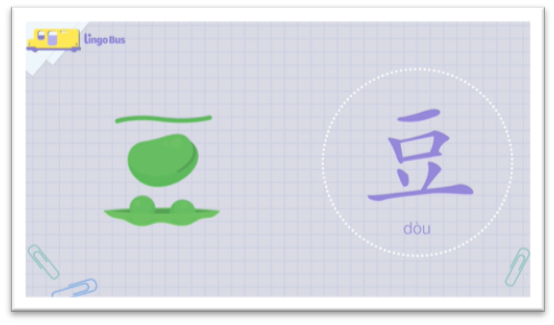Learning Chinese Characters: Six Tips for Learning Chinese Characters
Six Tips for Learning Chinese Characters
By: Teacher Henry
Mastering Chinese characters has always been one of the biggest hurdles when learning Chinese. If you do a quick internet search about learning Chinese characters, you will find many articles complaining that Chinese characters are impossible to learn and remember. (Of course, there are also many articles praising the beauty and magic of Chinese characters. What is it that makes people both love and hate them so much?

In my nearly 20 years of teaching experience, my students have included both successful Chinese character learners and students who have found them impossibly hard. I have found that there are 6 key points/tips that make the process of learning characters more straightforward. Let’s get right to them!
1: First learn to listen and speak, and then learn Chinese characters.
Traditional Chinese teaching methods for foreigners have always combined listening, speaking, reading, and writing Chinese together. From the first day of learning Chinese, learners must overcome the three challenges: tones, Pinyin, and Chinese characters. Our brains can only process and absorb a few new concepts at once before we begin closing our brains and feeling overwhelmed. This old method of teaching led to many beginners who simply gave up on learning after just a short period of time or who made very slow progress.
In today’s world of language, we have the benefit of years of research on how language acquisition works, and we know what methods are most effective and which cause learners to feel frustrated. Many institutions and teachers are changing because of this new information. The teachers will first spend a few months concentrating on laying a solid foundation for the students’ listening and speaking, and then let the students begin to learn to read. There are two main advantages to doing so: it simulates the language learning sequence of native speakers, and it reduces the barriers to beginning to learn Chinese. A native speaker of any language masters listening and speaking first, and then learns to read and write. The practice has proved that this is the most efficient and natural way. Without the stumbling block of Chinese characters, learners can concentrate on learning listening and speaking, so that their listening and speaking can improve rapidly and so they build comfort and confidence.
For Chinese self-learners, I would recommend beginning to learn characters only after about 50 hours of listening and speaking.
2: From simple to complex, from concrete to abstract.

Chinese characters are a magical system. There are characters with only one stroke, such as 一 乙, and Chinese characters with more than 10 strokes, such as 海 and 嚷. For learners, it is a wise choice to learn simple Chinese characters with few strokes first, and gradually learn Chinese characters with more strokes and complex structures. This goes back to my first point of not giving your brain more than it is ready to handle, and it also allows you to better learn the makeup of characters.
Each Chinese character has its own meaning. Some Chinese characters have very specific meanings, such as 木 for wood and 水 for water, and some have very abstract meanings, such as 的, and 子. From the perspective of learning, specific words are used more frequently and are easier to understand; therefore, it is wise to learn the concrete meaning first, and then learn the abstract meaning.
3: Learn the structure of characters, and you can be an excellent Chinese character architect.
In many languages, large words are comprised of smaller parts. In English, for example, words can be made by simply adding two words together, like “fire” and “truck”, or by taking prefixes, roots, and suffixes and creating a new word with an obvious meaning. Chinese works in a similar way. Instead of prefixes, roots, and suffix, though, we have what are called radicals, and these form the basis of most Chinese characters. For example:
休 = 亻+ 木 (person + tree= rest)
众 = 人 + 人 + 人 (person + person + person = crowd)
With radicals, we have the bricks for building Chinese characters. How are characters built? There are 7 basic structures of Chinese characters: single body, top-bottom structure, left-right structure, upper-middle-lower, left-middle-right, half-encircling, and full enclosing. Among them, the left-right structure accounts for nearly 67%. Let’s look at the following example words:
Single Body:本、刀、山、鸟
Top-bottom Structure:会、冬、家、要
Top-middle-bottom Structure:高、客、黄、京
Left-right Structure:好、坏、短、冰
Left-middle-right Structure:树、湖、做、脚
Enclosed Structure:国、园、图、固
Semi-enclosed Structure:包、边、进、原
After learning the radicals and basic structure of Chinese characters, when you see a character, first divide the Chinese characters; see how many radicals there are and how the radicals are arranged. In this way, you can learn Chinese in a logical and efficient way, and you will also be able to better guess at new characters when you see them.
4: Create your own mnemonic tools
During my many years of teaching, there was a student who impressed me the most. He always made up stories for Chinese characters. Almost all Chinese characters contained a story for him. For example a wall, the left side is soil, the right side is the upper half, and the lower side is the back. Why is the wall written like that? The left side is earth, the earliest wall was made of earth, the upper side of the right side is the first half, and the lower side is the backside. What does it mean to put the two together? It means that a person wants to go through the wall, but as a result, his body comes over, he can’t move forward, he can’t go back, and he gets stuck there. That’s what walls do, protect our property.

Of course, not every learner will be as inspired or as imaginative, but I would encourage you to apply your own ideas and logic when learning characters. This is not your first language, so make connections to the knowledge already in your brain and you will find more success (and hopefully some fun)!
Also, we can analyze the relationship between the radicals of Chinese characters and the pronunciation and meaning. Check out Teacher Steve’s blog article for more of an explanation of how this works!

At Lingo Bus, we teach characters with related radicals and also have created over a thousand pictorial versions of the characters to help students to better conceptualize their meanings. Feel free to use these for inspiration, and you can create some of your own as well!
5: Practice, practice, and keep practicing

The study of any foreign language is inseparable from constant practice, practice can seem boring, but must be done.
Just as it took you many tries to learn to read and write your primary language, it is normal for Chinese children to write each new character 20-30 times (or more) in primary and secondary schools. Realize that repeated writing is the best way to remember Chinese characters. Among the students I have taught, those who devoted a little time each day to practice writing Chinese characters have become masters of Chinese characters in the end. So, grab a pen or brush that brings you joy to write with and incorporate a few minutes of daily writing practice into your routine.
6: Be sure not to forget the pinyin.
Chinese characters are a combination of shapes, sounds, and meanings. For each Chinese character, we need to be able to read, understand the meaning, and be able to write them (or type them). When some learners are learning Chinese characters, they put all their energy into the shapes of the characters. In the end, they find that they can write the characters and know the meanings of the characters, but they don’t remember how to read the characters. Without knowing and perfecting the pronunciation of Chinese characters, the language will remain on paper (or the computer only) and you won’t be able to use it to communicate with others.
Unlike languages with phonetic alphabets, you will not be able to determine the pronunciation of a Chinese character by looking at it. Pinyin is an essential tool, especially for second-language learners. When you mispronounce a word, your teacher (or friend) can quickly show you which part is off using Pinyin- the tone, the initial, or the final. It can also be a useful tool for typing Chinese.
I hope these suggestions will be helpful for you as you begin to learn Chinese characters. We have already prepared lots of useful learning resources for you, register and get access to our resources now.

